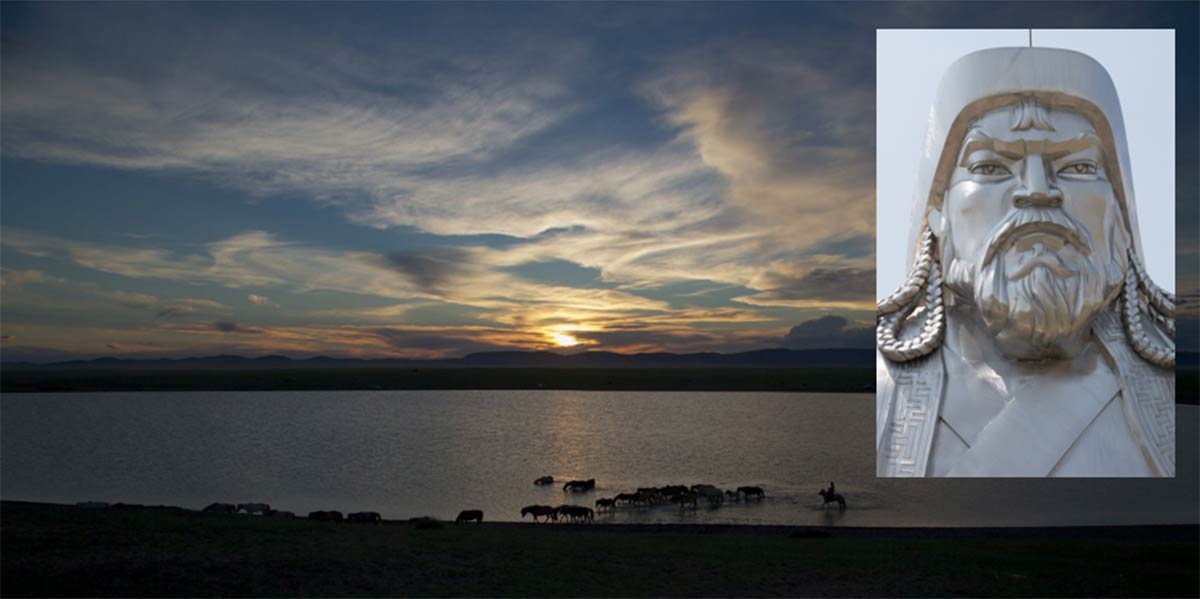Australian Archaeologists Identify Genghis Khan’s Lost Winter Camp
Australian archaeologists claim to have identified the legendary lost Genghis Khan winter camp. Known as Chinggis Khan in Mongolia, Genghis Khan lived from about 1162 AD until 1227 AD. He was the founder of the second largest empire in history, controlling all territories from the Pacific Ocean to the Carpathian Mountains of Europe. Expanding his empire, Khan led the merciless Mongol invasions of Europe. When Genghis was not serving his gold lust and conquering vast areas of territory, historical accounts say he resided at this winter camp or ordū, in Mongolia. Genghis Khan’s winter camp, after being lost for hundreds of years, has now been found according to Australian archaeologists.
But No Conclusive Link or Evidence Was Found to Genghis Khan
Scientists from the Australian National University have provided compelling new evidence that Avraga in eastern Mongolia was the legendary Genghis Khan winter camp. Published in Archaeological Research in Asia, lead author Dr Jack N. Fenner used radiocarbon dating results from samples collected at the ruins, located in the main part of Avraga. Radiocarbon dating showed “conclusively” that this ancient site had been occupied during the lifetime of Genghis Khan, and also that its occupation extended beyond the time of his son, Ogedei Khan.

Genghis Khan portrait cropped out of a page from an album, now located in the National Palace Museum in Taipei, depicting several Yuan emperors. (Public domain)
Dr Fenner said his team’s research supports the longstanding theory that Avraga was Genghis Khan’s winter camp. However, the author admits that they don’t have a “conclusive link” to the Mongol leader. But he says Avraga was “more likely than not” the Khan’s winter base camp.
Furthermore, the archaeologists found ancient evidence of ceremonies and rituals performed at Avraga. According to Dr Fenner, evidence of identical religious traditions have been found deep within the territories of the Yuan Empire in China, which was part of the Mongol Empire ’s southern expansion.
Genghis Khan’s Winter Camp Discovery Is A Great Historical Find
In an article on Medievalists.net Dr. Li Narangoa, a historian from the Australian National University, said Genghis Khan had at least four ordū base camps and that the historical documentation appears to indicate that the recently identified group of buildings at Avraga “was his main camp, probably for both Spring and Winter.” The reason this is so significant is that it provides “the natural science based proof for the findings of historians,” Narangoa stated. And in conclusion, “This was the camp where Chinggis Khan started his campaign against his southern neighbors” and Dr Fenner and his team ’s new paper supports this idea, representing what she described as “a great contribution to historical research.”
- Mosquito Hordes: How a Pesky Insect Destroyed the ‘Almost’ Invincible Mongol Empire
- Military stronghold for Mongolian Conqueror Genghis Khan Found by Archaeologists
- Spectacular photographs shed light on the ancient nomadic lifestyle of Mongolia
The new paper not only identifies an important ancient settlement associated with one of history’s greatest military leaders, but it also challenges mainstream historical ideas relating to the reasons for the rapid expansion of the Mongol Empire. For a long time, most archaeological researchers have maintained the Mongol’s growing demand for millet was among the primary motivators that drove the expansion of the Mongolian Empire. However, Dr Fenner ’s analyses of livestock bones from Avraga do not support this theory, and his paper suggests an alternative reason for Mongol expansion.

Genghis Khan Mausoleum near Ordos in Inner Mongolia. (Samxli CC BY 3.0)
High Resolution Bone Study Changes Mongol Expansion Theory
Dr Fenner ’s new investigations went far beyond radiocarbon dating of bones. His team also looked at the chemical makeup of bones in high resolution which enabled a comparative analysis of the measured differences in their structures. This in turn enabled the team to classify the bones from high and low status individuals, whose bone matrixes differed due to environmental factors and differences in diet.
Reminding readers that you really “are what you eat,” the professor said that soil aridity negatively affected Mongol food sources and that this aridity is what changes the composition of human bones, rather than a change in diet that included millet.
The results of the high-resolution bone analyses determined that Mongol societal elites had a diet similar to commoners, which was mainly meat and animal products, despite having access to a variety of food and drink.
Top image: Mongolian horseman in Avraga, where Genghis Khan’s winter camp ruins were found. Source: sergelen1 / CC BY 2.0
By Ashley Cowie



















